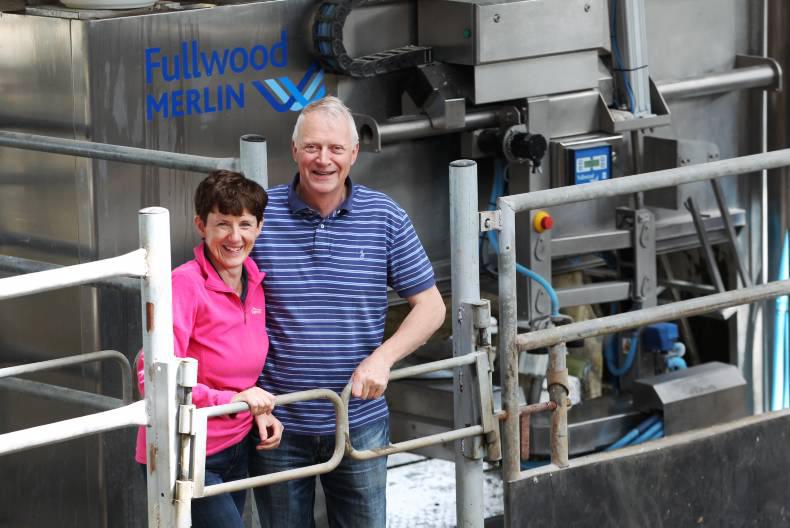Having switched from beef to dairy in the last two years, the Brickleys have installed two Fullwood robotic milkers.
Farm walk @ Ger & Angela Brickleys Coolrain. Talking robots and zero grazing ! pic.twitter.com/G7y7my5UPR
— Ann-Marie Murphy (@ann_marieM) October 10, 2015After travelling many countries, the Brickleys have adopted an impressive continental-style system. All their cows are in calf to Fleckvieh this season and while most of the herd are a Holstein-Friesian cross, some are pedigree Fleckvieh. They also practise zero grazing, which costs 2.5c/l and delivers a return of 4c/l through extra grass intake and subsequently milk output.
Ger believes that you will milk cows for a lot longer in your life with a robot than you would with a milking parlour and they enjoy the lifestyle it affords. He also emphasised that a robot will cost no more than a normal parlour if you cost it over 10 years.
They use Weeks’ aAa system when breeding and milk recording projection is for 6,500 litres herd average, 470kg solids, as heifers this year. Cows are fed to yield, depending on grass quality and cow condition. The Brickleys estimate how much they will produce from grass alone (17 to 25 litres) and then supplement at 0.45kg meal per litre above that.
“Contrary to the popular mantra, our figures show the most profitable cows are the ones eating the most meal, because they’re producing the most milk,” said Ger.
All the herd are first calvers, getting an average of 2.6kg/day, ranging from 0.4kg to 6.5kg this week. Average milk this week: 17 litres, 4.75% fat, 3.7% protein (1.44kg solids = 1.8kg for mature herd).
Why dairy?
“We had pushed the farm to the limit by calving 52 pedigree Simmental and Charolais the last year we were in it,” said Ger. “ We were getting some great prices, but not making a profit overall. With the sucklers, 20% or more of them made no contribution, between having to keep replacements and losses. We hope to go gradually to all spring-calving milkers by 2017.”
With the robot, the Brickleys are thankful that they don’t have to get up at 6am every morning, but they say that the downside is being on call 24/7 for when the machine has trouble. They find there is more daily work than with beef, but it is at their leisure with no time pressure.
“It should get easier. We will have calved 90 heifers this year and set-up a complete new farm system.”






 This is a subscriber-only article
This is a subscriber-only article
















SHARING OPTIONS: